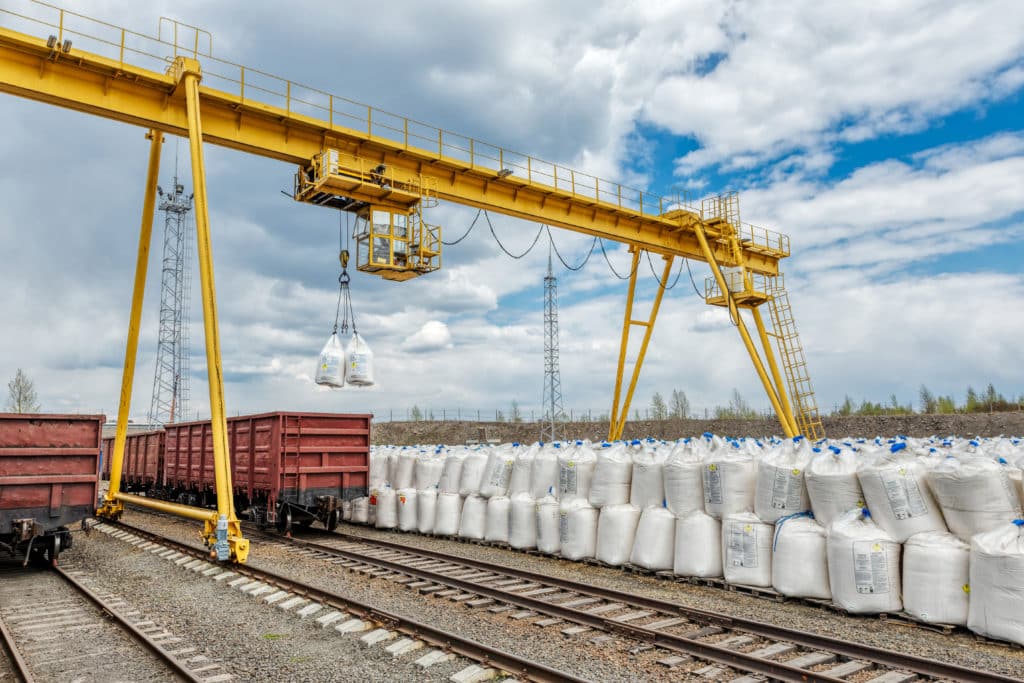As an overhead crane operator, you’re dealing with a powerful machine that can lift more than 30,000 pounds. But you’re also dealing with a dangerous piece of equipment that could cause serious problems if something goes wrong.
Your experience and training can help you prevent everyday crane problems. But are you prepared to handle abnormal weather conditions? Without preparation, the wrong weather situation could damage your crane and endanger you and your coworkers.
Pay attention to these extreme weather conditions and take the necessary precautions.
Lightning
Because overhead cranes tower high into the air, they have a high risk of getting struck by lightning. You should not use your overhead crane if there is any lightning in the area. A simple way to know if you’re in danger of a lightning strike is if you hear thunder. You could use a lightning detector to pinpoint the exact location of the lightning.
As soon as you’re alerted to the presence of lightning, turn off the crane’s electrical power and lower the boom. Then make sure all your coworkers take shelter far away from the crane and any other metal equipment.
When the lightning has ceased, that doesn’t mean you can immediately head back to work. Inspect the overhead crane for any damage before you resume your project. High temperatures from a lightning strike can cause the crane’s rope to melt, so you must change the crane’s rope after any lightning strike.
Rain
Even when lightning isn’t a factor, rainy conditions can damage your overhead crane. Water can enter different parts of the crane, including the clutch and the brakes. The water can damage these parts and prevent your crane from working properly.
During a construction project, time and money are always huge considerations. However, you should think twice before you carry on your project in the rain. It’s better to move your crane to a sheltered area if possible and wait until the rain subsides.
Just as you would do after a lightning strike, inspect your overhead crane after a rainstorm for any signs of damage.
Wind
Wind is arguably the most dangerous type of weather for overhead cranes. Wind can cause the crane’s load to swing. This effect can put unnecessary strain on the crane and could even cause it to drop the load.
Each overhead crane comes with a wind rating, indicating the highest speed of wind it can withstand. A general recommendation is that overhead cranes shouldn’t operate in winds of more than 20 miles per hour.
As you operate the crane in windy conditions, pay attention to how the wind affects the crane at any given moment. If wind hits the underside of the boom, it can reduce the crane’s backward stability. If wind hits the rear of the boom, it can reduce the crane’s forward stability.
Keep in mind that if you’re operating the crane between two buildings, the wind speed can increase. Also, the higher the crane is lifting, the higher the wind speed is likely to be.
Cold Weather
When you think of “extreme weather,” you probably don’t first think of cold weather. However, cold weather can have a huge impact on overhead cranes. Cold temperatures can reduce the crane’s tensile strength and can even cause it to fail.
An overhead’s hydraulic system can weaken in cold weather. Thus, you should reduce your load weight by 25 percent in subzero temperatures. If the weather is colder than -20 degrees F, reduce the load weight by 40 percent.
Other cold weather precautions include:
- Surrounding the trolley with an enclosed track to protect it from ice
- Adding a cold weather finish to the crane
- Using conductor bars to protect the crane’s joints
- Investing in a cold-weather motor
Snow and extremely cold temperatures are dangerous conditions to operate a crane. You should exercise extreme caution under these conditions.
Heat
Although it’s not as dangerous as cold weather, heat still poses a risk to your overhead crane. For one, heat can decrease the effectiveness of your crane’s seals. Broken seals can lead to other broken parts. Thus, it’s crucial not to expose your crane’s seals to direct sunlight, especially in hot weather.
Another heat-related problem is dust, which often forms in hot conditions. If you don’t clean and maintain your crane’s filters, dust and dirt can wreak havoc on your crane. It’s important to regularly clean and lubricate your crane’s parts as well.
Operating an overhead crane can be dangerous under normal circumstances. When extreme weather comes into play, the potential for danger multiplies. Use these guidelines to protect yourself, your employees, and your equipment during extreme weather.
Keep reading our blog for more overhead crane tips and tricks. If you need crane service to prepare your crane for extreme weather conditions, or for any other issues, contact us.


